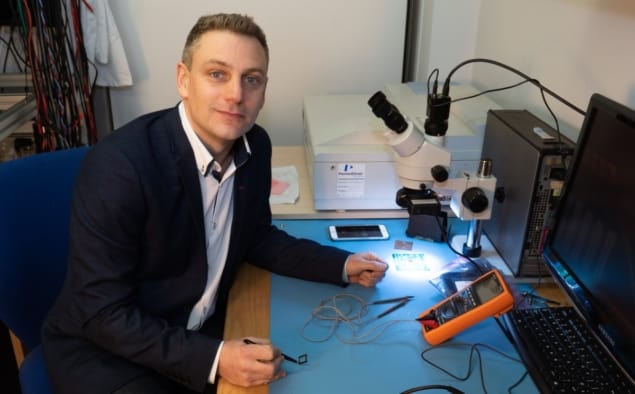Phil Marsden, managing director of Unitive Design & Analysis, talks to Tami Freeman about his career in physics, setting up a company and his latest role as chair of the IOP’s Medical Physics Group

Can you describe your early career in physics?
I am a semiconductor physicist by training – though this is very different to where I ended up. For my PhD, I studied the optical response of semiconductors in high magnetic fields and at liquid helium temperatures. I did a postdoc in quantum optics at KTH in Stockholm, then I went back to semiconductor physics at the University of Toronto.
You next worked in the film industry, that sounds intriguing, how did that happen?
I applied for what I thought was a software job in the film industry. I went into this Victorian ex-workhouse in Soho, only to find that the guys there were making world-leading celluloid film scanners. I saw the enormous film scanner, and thought ‘this is cool, I want to do this’. We were designing film scanners using military-grade satellite image sensors to scan celluloid film with extremely high resolution and supplying these scanners to all the major studios. That role took me all over the world, including Hollywood and South America.
But in 2008, Sony produced a new type of CMOS image sensor that was head and shoulders above the rest. Suddenly, what you could capture digitally was equivalent to, if not better than, what you could capture onto film. The whole motion picture industry changed – the post-production that used to take months now had to be turned around in weeks. The market for film scanners died overnight.
So what prompted your move into medical imaging?
That was an end of an era and I had to find another job. As an expert in imaging, I thought about areas where imaging will always be relevant – and chose medical imaging. I ended up at a medical imaging company as the engineering manager for their CMOS detector line. The irony being, of course, that it was CMOS that destroyed my motion picture career. I did that for about two years, but I thought I’d be more comfortable in a small business, so I decided to set one up myself.
What was the idea behind Unitive Design and Analysis?
I’d seen a lot of the challenges that large companies face in terms of performing technology development while also trying to deliver a product. I thought we could help people like that to explore new technologies.
Another issue is the regulatory landscape for medical devices. This changed a great deal in the last 10 years and I had learnt a lot about designing for compliance. You’ll see a lot of SMEs design a product and then try to get it through regulatory compliance. Suddenly they realise that they need evidence and feasibility data from the early design stages, and they end up having to redo all their design work.
So we can benefit large companies in terms of exploring new technologies. And small companies who don’t have the product development experience can leverage the expertise of those who have already done that. And for the investors who are investing in these technologies, it means that they can get a return-on-investment faster. That was why I set up the company, these three opportunities.
While 60% of our business is consultancy and contracting, we also perform product development and sponsor a biochemical engineering student at UCL. We are completely self-funded, so the money we make in consulting and contracting is reinvested in our own product development.
How did you get involved with the IOP’s Medical Physics Group?
I’ve been an IOP member since 1993, and was most active when I was an academic. As I started working within medical devices, I became a member of the Medical Physics Group. When I started my own business, I realised that I needed to strengthen my networks and meet more people. So I got involved in the group again, joined the committee in 2016 and in 2017, I was elected as its chair.
The remit of the group is to raise awareness of medical physics and medical physicists. People don’t realise there’s a huge team of medical physicists in every hospital making sure that everything works, to the standard that you expect, and that this standard is the same across clinics, hospitals and trusts — they are the unsung heroes. There are a lot of radiotherapy machines across the UK, and with techniques like proton therapy becoming more popular, the number of medical physicists is actually increasing. Our role as a group is to promote that.
How does the group achieve this?
We organize five or six meetings a year. The December meeting is always focused on clinical translation – looking at the enormous challenges required to translate technologies into the clinic. There are clinical pathway challenges, regulatory challenges, just getting technology into the NHS is a challenge. It’s an enormous task to bring medical devices to market.
The other thing that we do as a group, which I think we do quite well, is bring together a community that’s normally quite siloed. Medical physicists don’t just work in hospitals, there are a huge number of academic and industrial medical physicists as well, the people designing kit and producing big systems like accelerators, as well as devices like surgical lasers. Then there are those between the boundary of healthcare engineering and medical physics, who repair and service these systems. We all have the hat of medical physicist, but work in very different environments. We want to bring all these together and become a core community to discuss the evolving challenges.



